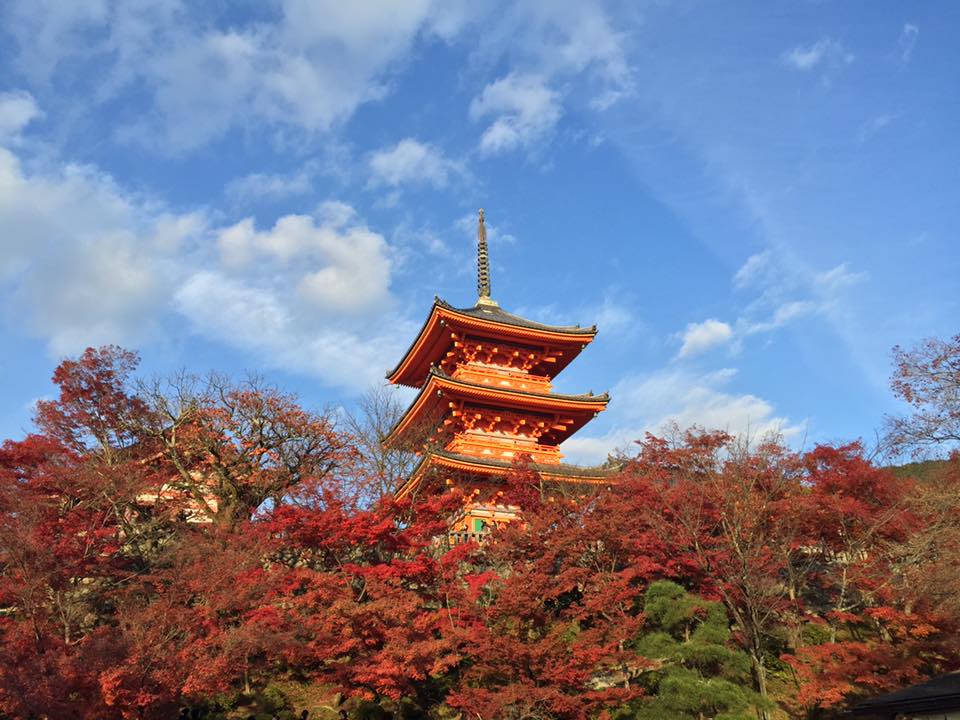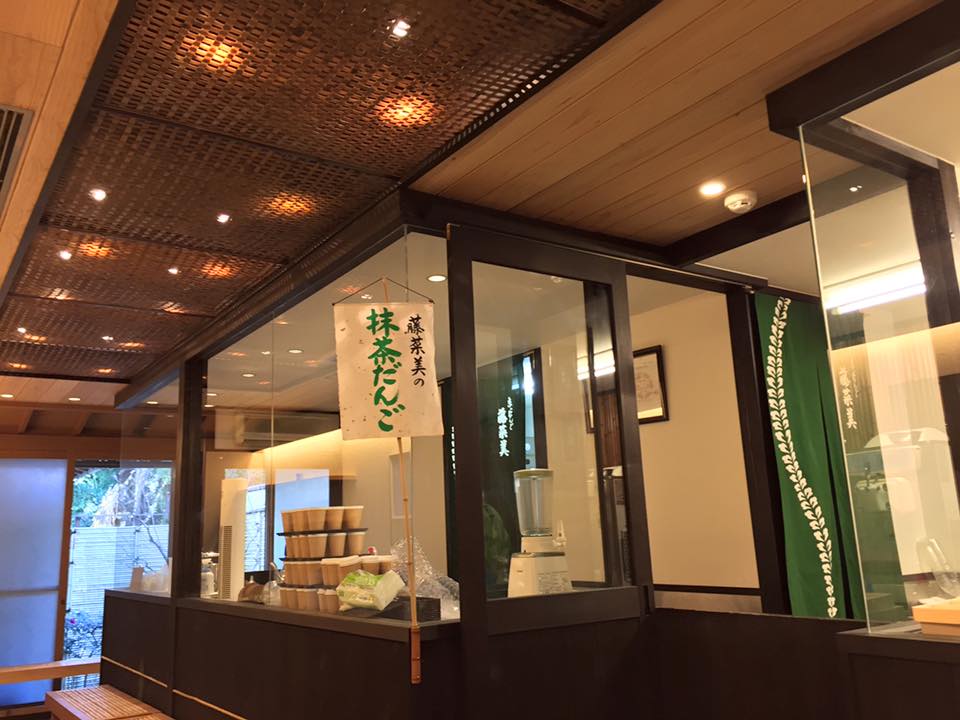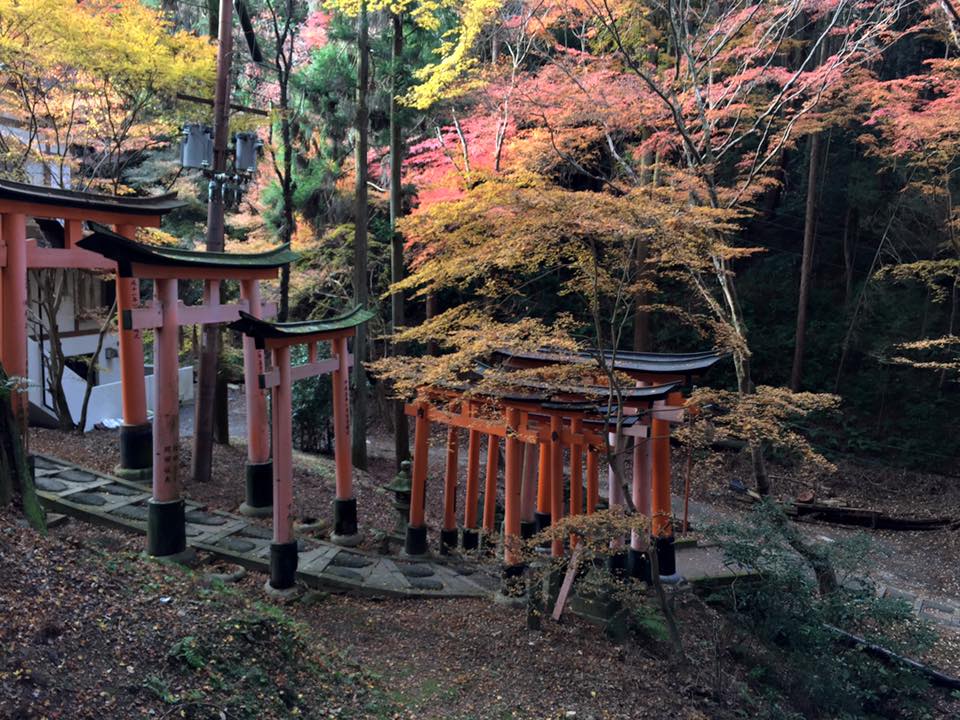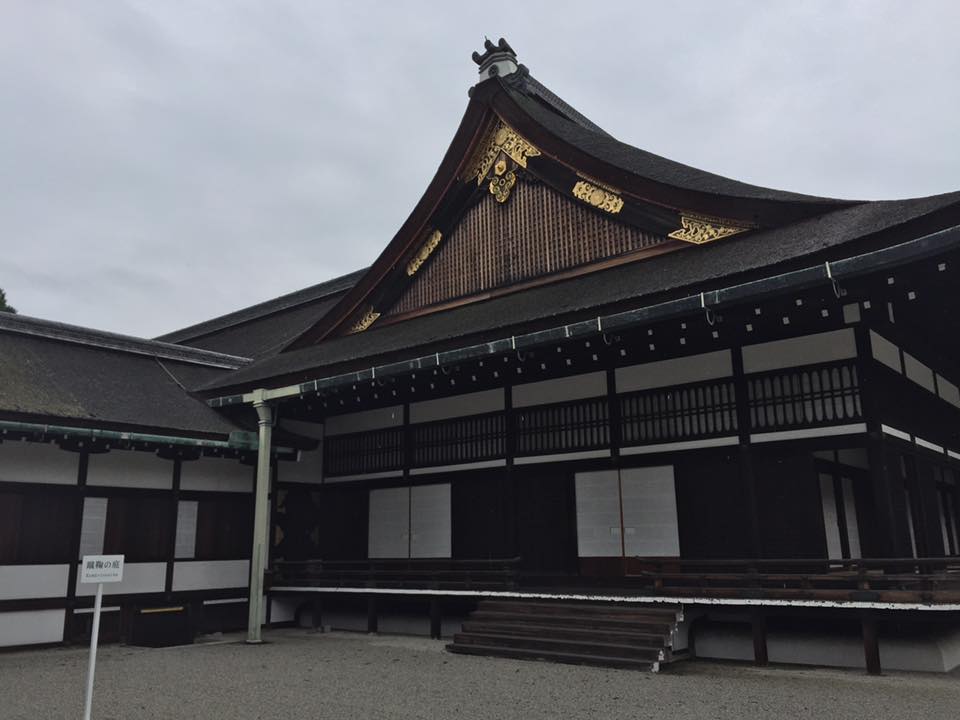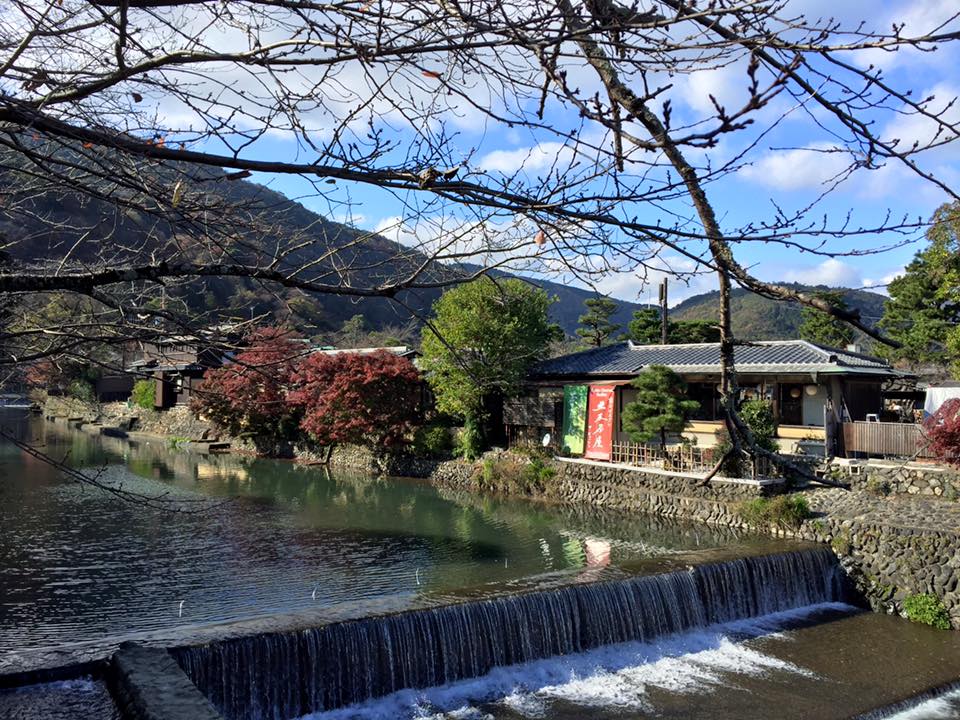Kyōto e yōkoso – Welcome to Kyoto!
Kyoto is the beating heart of Japan’s culture and tradition. With a population well over 2 million people, this stunning city is brimming with all the sights and sounds to immerse you in a true Japanese experience. While exploring Kyoto, I encourage any traveller to make constant left or right turns into Kyoto’s neighbourhoods and side streets – it’s very likely you’ll run into some friendly locals, or a Geisha!
The former capital city of Japan hosts an impressive 17 world heritage sites and over 2000 temples and shrines. That being said, planning a trip to Kyoto can be slightly overwhelming with an abundance of things to see and do – here’s a list of recommendations that should be on every traveller’s to-do list.
Kiyomizu-dera Temple
In the eastern region of Kyoto sits the cities main cultural landmark and UNESCO world heritage site, Kiyomizu-dera Temple. Built in 778, the temple was built with wooden pillars and is a structure that contains no nails. The temple has several shrines and pagoda’s spread throughout the grounds, so it’s wise to allow a few hours to explore the region. Before the temples main stage to the left of the entrance is Tainai-meguri or ‘The belly of the Buddha’ – take off your shoes, navigate your way down a steep staircase and prepare to enter complete darkness and rely on your senses.
The main attraction of the temple is Kiyomizu stage, which overlooks the Otawa mountain valley in addition to several ambitious hiking trails located throughout the grounds. Upon descending from the temple, make sure you wander down Chawan-zaka or ‘Teapot lane’ – a cobble stone laneway lined with shops selling street food, souvenirs and Kyoto handicrafts.
Kiyomizu-dera
1-chome, Kiyomizu, Higashiyama-ku, Kyoto City, 6am to 6pm, 300 yen
Ninen-zaka steps
Kyoto is brimming with preserved streets that make you feel as though you’re stepping into a long gone era. Ninen-zaka steps is one such street which you can stumble upon on your way to or from Kiyomizu-dera temple. These sloping cobble stone lanes are an insight into Japanese customs and are lined with traditional wooden storefronts, teahouses and eateries.
Ninen-zaka steps are an excellent place to sample some traditional Japanese sweets such as ‘dango’ or rice flour dumplings and mocha balls filled with red bean paste – there are even some stores that display the sweets being made behind the counter.
Ninen-zaka steps
Higashiyama-ku, Kyoto prefecture, Free
Note: There are very few street signs – if you’re walking from Gion, once you pass Yasaka shrine turn left at the 3rd set of traffic lights.
Nishiki Market
In downtown Kyoto, running parallel to Shijo dori (Kyotos central shopping district), Nishiki market is fondly referred to as ‘Kyoto’s Kitchen’ and caters to both the locals and tourists alike. This fascinating food market spans just shy of 500 meters, but expect this length of shops to keep your senses jumping from left to right for a decent amount of time as Nishiki market draws quite a crowd. The main appeal of this cultural market place is in its immediacy – food, drink and souvenir shops line the street, one after the other, with many of the storefronts being no larger than a garage door. Expect to see a large variety of tsukemono (pickled vegetables), omiyage (souvenirs), konpeito (Japanese sugar candy), various seafoods, traditional Japanese street foods and more.
This narrow street of shops is best enjoyed travelling light and with an eco shopping bag in hand. Prepare to be washing-machined around a little bit by the crowds, but that’s half the fun of Niskiki market.
Nishiki Market
Nishikikoji Teramachi-Takakura, Nakagyo-ku, Kyoto, 9am to 5pm, Free
Fushimi Inari Shrine
You may already be familiar with the image of Fushimi Inari shrine – thousands of red torii gates make this Shinto shrine in southern Kyoto easy to recognize. Fushimi Inari shrine is dedicated to ‘Inari’, the god of rice, and is the most important of it’s kind. The grounds contain several main buildings and shrines, as well as winding trails leading into Mount Inari forest. After marveling at the main building ‘Honden’ make your way to the back of the grounds to find the entrance to the hiking trails.
Two parallel rows of gates or ‘Senbon torii’ (literally translating to thousands of torii gates) are a mesmerizing way to enter the forest. There are two main trails leading to the summit of Mount Inari, one tends to wind more, and the entire hike takes anywhere from 40 minutes to over an hour each way. There are several small restaurants located along the trail, serving Inari sushi and Kitsune udon, which you can quietly enjoy while looking out onto the silent forest.
Fushimi Inari Shrine
68 Fukakusa Yabunouchi-cho, Fushimi-ku, Kyoto, Open 24 hours, Free
Kyoto Imperial Palace
Kyoto Imperial Palace was the home of Japan’s Imperial family until 1868. Located within Kyoto Imperial Park in the center of the city, these majestic palace grounds give you a peek into the world of the royal family. The structures throughout the palace are impressive displays of traditional Japanese architecture. As the place is still utilized by the Imperial family, tickets must be reserved and approved well in advance through the Imperial Agency Office. The palace grounds can only be entered via guided tours which are available in both Japanese and English.
The structures themselves cannot be entered by visitors due to matters of preservation and security, however don’t let this deter you from a visit – the guided tour is an interesting and informative insight into the Imperial family and their lifestyle (gold, gold, everywhere). Along with the palace, Kyoto Imperial Park hosts a range of lush gardens, halls and gates which makes it a popular recreational site for locals
Kyoto Imperial Palace
3 Kyotogyoen, Kamigyo Ward, Kyoto, Free, Visiting hours, processes and regulations regarding the Kyoto Imperial Palace vary – click here for more information.
Arashiyama
Arashiyama is arguably the most stunning natural region of Kyoto. For a thorough visit to Arashiyama you should set aside an entire day to explore the area, and if there was ever a time to rent a bicycle in Kyoto, it’s here. Bicycle rental is available for 1000 yen near the train station when you arrive. Togetsukyo bridge is the central landmark of Arashiyama, and is the ideal location to admire the lush forest surrounding the region. North of the bridge is an area known as Sagano, which is by far a more rural atmosphere than the central region which is full of tourist shops.
The bamboo groves, located in the northern region, are breathtaking. If you don’t pay attention to the time, it’s easy to spend hours among the towering stalks. Other notable things to do while you’re in the area include cycling or walking along the Katsura river – where the water is crystal blue and every picture you take will look photo-shopped. You’ll also find Iwatayama monkey park (‘monkeys may bite’ signs – enough said), Tenryuji temple along with several others, river boat tours and cormorant fishing.
Arashiyama
Ukyo Ward, Kyoto, Kyoto Prefecture, Various temples, parks and local business hours approximately range from 9am to 5pm
Temple Flea Markets
Kyoto has no shortage of souvenir shops, however if you’re looking for something a little more unique and quirky, then Kyoto’s temple flea markets are the place to go. Toji Temple (21st of each month) and Kitano Tenmangu (25th of each month) host the cities two main flea markets, and trust me you won’t be disappointed. If you want to snag the best finds and avoid some of the crowds, it’s best to get to the flea markets early.
Souvenir shops tend to be expensive, therefore flea markets are an ideal place to pick up your little piece of Kyoto without breaking the bank. Pick up a vintage Kimono for 500 yen, a Japanese watercolour painting, trinkets and toys or an old Asahi beer poster (if you’re lucky). Before you leave make sure you taste some of the local cuisine on offer at one of the food stalls which serve taiyaki (red bean cakes), takoyaki (octopus pancake balls) or some oden – safe to say it’s an experience not to be missed.
Toji Temple
1 Kujocho, Minami Ward, Kyoto, Market open from 7am to 4.30pm (hours vary slightly according to season), Temple hours are 8.30am to 5.30pm, Free
Kitano Tenmangu
Market open from 6am to 9pm (hours vary slightly according to season), Temple hours are 5m to 6pm, Free
Gion District
Located near the Shijo-dori shopping street in central Kyoto, Gion is an old district famed for Geisha’s and teahouses. There are several unique experience-based venues located throughout Gion including the Minamiza Kabuki Theatre and Ochaya’s – which are a dine and drink experience where a guest will be entertained by a Geiko or Maiko performing music, dancing, hosting games and engaging in conversation. This part of Kyoto is laden with history and traditional culture and it also plays host to Japan’s most famous festival the ‘Gion Matsuri’ festival of Yasaka Shrine. This festival hosted in July dates back to 869 and features a months worth of food stalls, floats, grand processions and other entertainment.
Although this region draws quite a crowd, it’s a beautiful part of Kyoto to explore especially in the evening – a stroll along the Kamo-Gawa river is highly recommended.
Gion
Gionmachi, Higashiyama-ku, Kyoto
